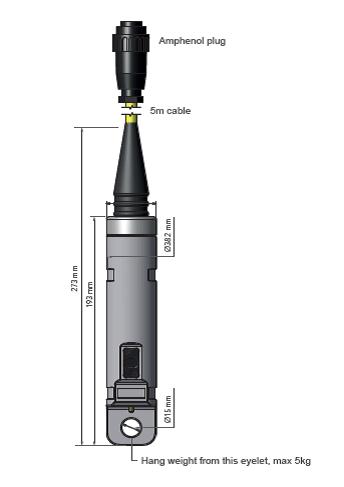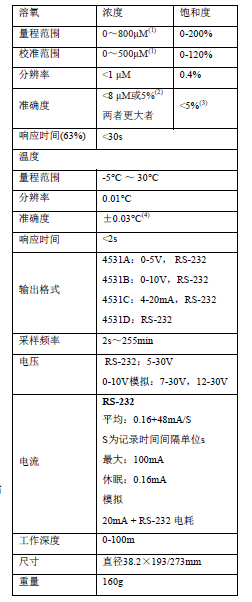| 
| Features: |
|
|
| 1. Principles of optical fluorescence quenching measurement based on life cycle |
| 2. Long-term stability |
| 3. No calibration required for more than one year |
| 4. Small maintenance |
| 5. Intelligent sensor, directly output calibrated data |
| 6. Can be used separately |
| 7. Output format: 4~20mA, 0~5V, 0~10V, RS232 |
| 8. Cable length can be customized |
|
|
|
|
| Dissolved oxygen plays an important role in the biochemical process and process industry of water environments, and is the most important measurement parameter in many fields, such as: |
| 1. Process Industry | 2. Ship ballast water |
|
| 3. Water and wastewater systems | 4. Fjords or other areas with less exchange of water |
|
| 5. Ship cabin | 6. Aquaculture |
|
| Andra dissolved oxygen probes are based on the principle of fluorescence quenching measurement of life cycle.It uses platinum porphyrin complex as a fluorescent material and is embedded in a breathable fluorescent film. A black light isolation coating protects the fluorescent material from the fluorescence of sunlight and water particles.The fluorescent film is exposed to ambient water on one side and is installed on the optical window of the measuring chamber on the other side.The fluorescent material on the fluorescent film is excitated by blue light to emit red light. The detector detects the time from the emitting blue light to the release of red light. This time is linearly correlated with the dissolved oxygen concentration, and then after temperature compensation, dissolved oxygen is obtainedconcentration.The life cycle-based fluorescence quenching measurement principle has the following advantages compared to electrochemical sensors: |
| 1. The disturbance has little impact (no oxygen consumption) | 2. Better long-term stability |
|
| 3. Less affected by pollution | 4. Not affected by stress |
|
| 5. No frequent calibration is required to measure the absolute concentration of dissolved oxygen. | 6. Faster response time |
|
|  |  |
|
|
|
|
|
|
|
|
|
|
|
| 1. μM =μmol/l.If you want to getUnited States/l, divided by31.25. |
|
| 2. Changes in salinity>1ms/SmartSalinity compensation is required, pressure>100 noPressure compensation is required. |
|
| 3. Calibration range:0~120%. |
|
| 4. Calibration range:0~36°C. |
|
| 5. Parameters are subject to change without notice. |
|
|
|
|
|
|
|
|
|
|
|


